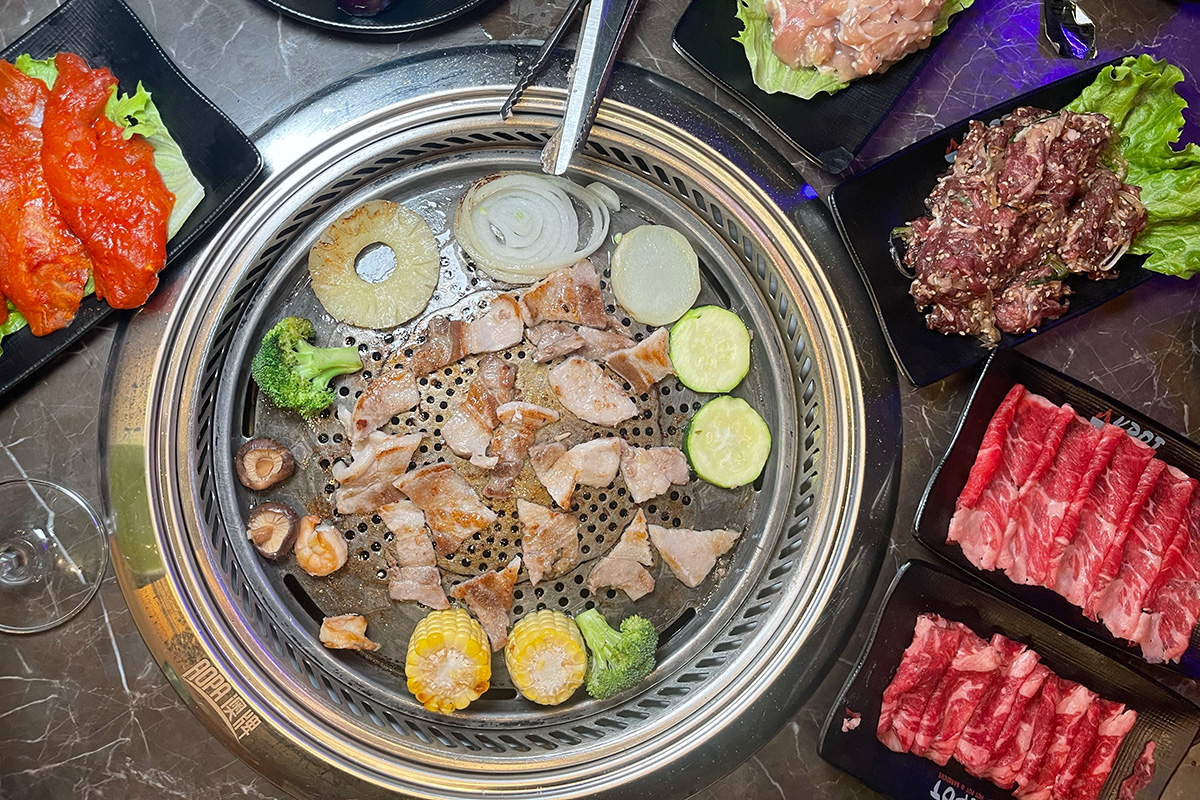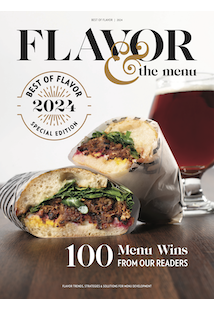
Like hot pot, Korean barbecue is a traditional, shared dish that tasks diners with part of the meal’s preparation—this time using a grill rather than stovetop. But whereas hot pot involves cooking a variety of ingredients, Korean barbecue focuses on grilling the meat and then pairing it with already prepared side dishes (banchan), such as kimchi, spicy cucumbers, savory pancakes and marinated veggies. Garnishes and sauces like gochujang and ssamjang add another flavor dimension. Diners can mix and match bites of fresh-off-the-grill meat and sides or combine them in lettuce wraps.
Many Korean barbecue proteins have eclipsed their original formatting, appearing in a number of global mash-ups and carriers (with tacos being an especially popular handheld). While these fresh takes demonstrate the versatility of bulgogi, galbi and other Korean meat dishes, the original format is hard to surpass in terms of experience-forward dining. “The hands-on component transforms a simple meal into a memorable event, leaving guests feeling satisfied not just by the delicious food, but by the fun, interactive experience they’ve shared,” says KPOT’s Farrell.
The brand’s Korean barbecue options are just as plentiful as its hot pot choices, with the protein section accounting for the lion’s share. The requisite bulgogi (available in beef, pork and chicken) is joined by other popular Korean barbecue meats, including smoked garlic pork belly, Angus chuck flap tail and spicy baby octopus as well as less traditional options like miso pork and spicy salmon. As with hot pot, selecting the foods is part of the collective dining experience. “This concept capitalizes on the growing demand for experiential dining options and the increasing Western interest in diverse Asian cuisines and fusion restaurants. The entertainment aspect also adds a ton of appeal, making it more than a meal, but an activity that anyone can enjoy,” Farrell says. “Lastly, the ability to personalize the meal to your specific dietary needs and preferences is a huge draw for our guests.”
In terms of price point and atmosphere, KPOT lands squarely in the casual-dining category, but Korean barbecue transcends all levels. On the limited-service side, California-based Flame Broiler has been slinging Korean barbecue for nearly 30 years—though guests might not have realized it. When the brand started in the mid-90s, it kept the names of dishes generic so as not to alienate non-Korean Americans. In recent years, however, the brand has more openly embraced its heritage by offering Korean spicy chicken, sides of kimchi and its very own Seoul Scorcher Sauce.
On the opposite side of the dining spectrum are Michelin-starred concepts that bring a Korean barbecue ethos to steakhouse fare. Cote, which first opened in New York in 2017 and has since expanded to Miami, Las Vegas and Singapore, menus high-tier proteins, including Grand Cru Galbi and reserve cuts of Japanese Wagyu. The banchan selection is similarly upscale, with pickled vegetables, a scallion salad of mixed greens and gochugaru vinaigrette and an egg soufflé made with kelp stock.







